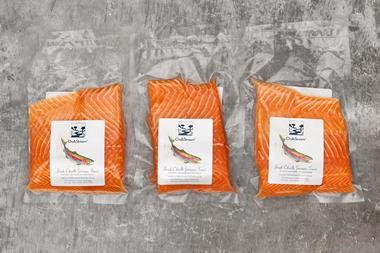Dogs and cats rule but snakes, reptiles and tropical fish are all growing in popularity, according to the Pet Food Manufacturers' Association: "There is a growing trend among pet owners towards unusual or exotic animals," it says.
This is backed up by TGI research. James Powell, assistant marketing manager, says ownership of tropical fish has increased, particularly among young people, who consider it trendy.
He adds: "Although the goldfish/coldwater fish market is fairly static, there is steady growth in the tropical fish market. In 2003, just over a million shoppers owned tropical fish, but this has climbed to 1.3 million today."
Not surprisingly, cute and cuddly still trumps all rivals, with Wagg Foods, which produces a range of branded and own-label foods for small animals, estimating that the market for small animal products has grown 15% in value year-on-year, largely driven by Tesco.
"We were gobsmacked by how many people own these pets," says marketing director Tom Page. He points out that elderly people in particular are turning to small animal ownership. "They are great companions but without the worry of 'I might only be around another five years and what's going to happen to the dog?'. They don't need exercise and they are cheap to buy and feed."
According to specialist small animal food manufacturer Supreme Petfoods, there has been major growth in small animals over recent years and some 4.8 million are kept as pets in the UK.
Of these, rabbits account for about 1.7 million, followed by hamsters at 1.1 million and guinea pigs at 1.04 million, with gerbils, ferrets, rats and chinchillas also in the frame.
The company, which produces the Russel Rabbit brand, confirms: "The growth trend is for older owners of small pets - companion pets for older people and for those who live in towns and seldom have access to a garden or the countryside."
There are any number of ways of indulging even the smallest of animals. Says Page: "You can now get some really cool accessories for small animals - toys and housing, nibbling treats, bottles with nice covers and even rabbit harnesses. Somewhere, hundreds of thousands of people are walking their rabbits. I am amazed by the number of bling accessories being sold."
Meanwhile, the wild bird category has continued to benefit from social and demographic changes, says Sam Marriage, marketing manager at Cranswick Pet Products. "People enjoy seeing wildlife in the garden without having the commitment required with keeping pets," he points out. "The latest research shows ten million people now regularly feed wild birds in their gardens, and there has been a much stronger focus by retailers on the wild bird category in 2006.
"It is a young and dynamic market, with product profiles changing and developing rapidly throughout the past two years. This has provided an opportunity for responsive retailers."
Marriage reckons there's plenty of untapped potential: "The wild bird market is no longer just about kitchen scraps, mesh feeders and mixed seed. Customers want funky accessories, nutritiously balanced foods and loads of information."
The multiples have been quick to latch on to these trends. Steve Uglow, petcare buyer at MBL, says: "We are going into wild bird care with a range of seven products. We currently offer only two lines but there's a lot of demand and it's a growing market. Grocery is taking a bigger share of bird care from the traditional garden centre and petshop sectors."
Uglow predicts that wild bird care will be worth more than £37m in grocery by the end of the decade, helped by more retailers extending their ranges. "Bedding and food for smaller pets is a small but essential part of the product offer and it's an area that can be developed," he adds.n



















No comments yet